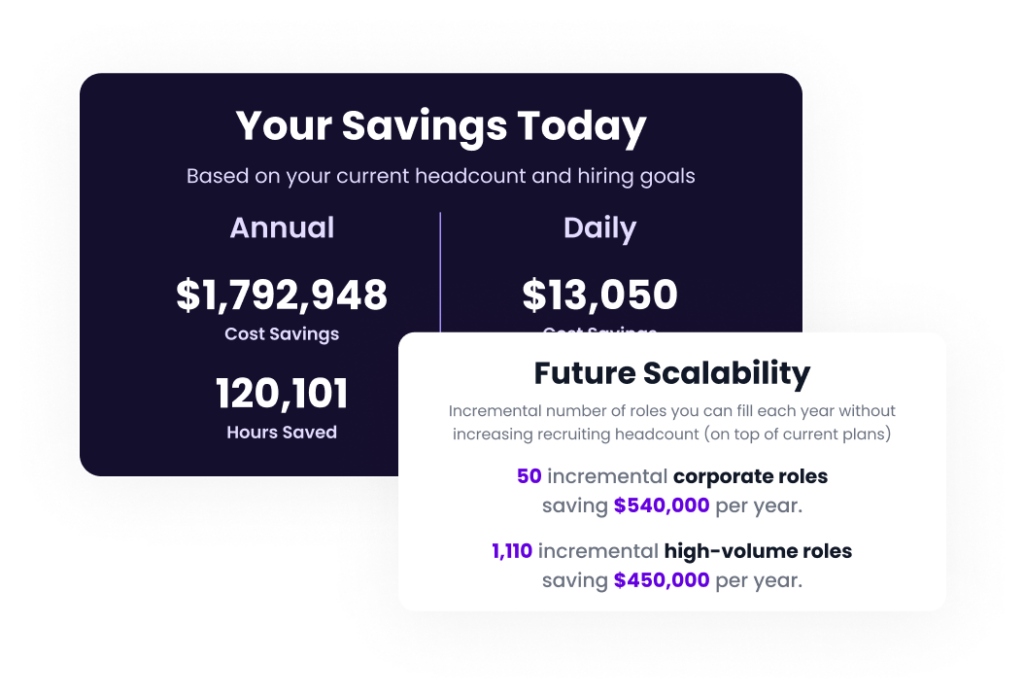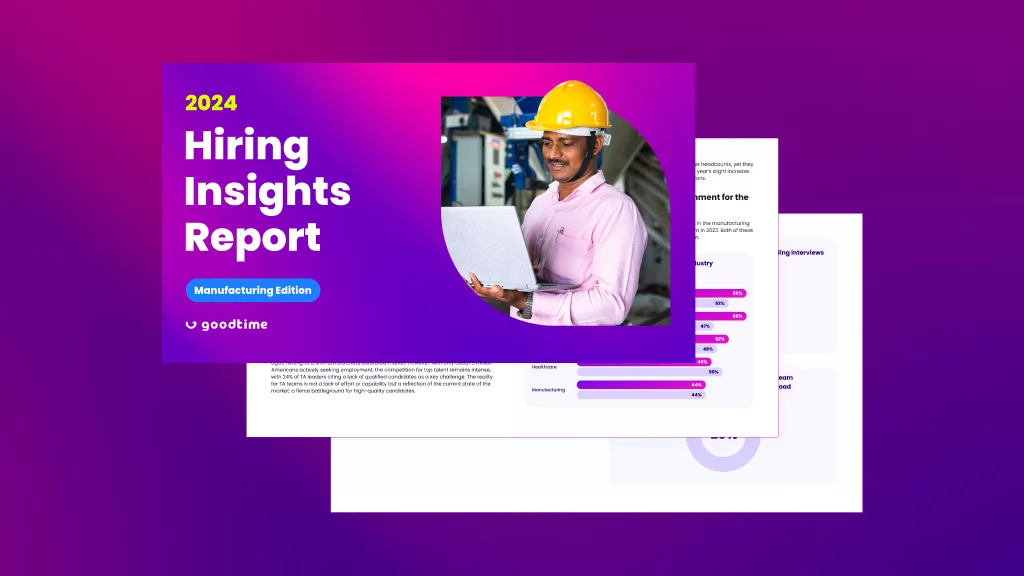In a fast-paced field like talent acquisition, the name of the game is simple: evolve or die. Talent teams can either keep pace with the ever-changing rules for hiring, or get left in the dust.
The worldwide events from the past few years (COVID-19, anyone?) have revolutionized the ways that companies snag top talent. But here’s the question of the hour: amid all of the commotion in the talent acquisition industry, what really matters right now? And what will matter for talent teams in the future?
We sat down with our Head of People Strategy, Jenn Oswald, to hear her thoughts on how we found ourselves at this current moment in the industry, where talent teams should focus their attention, and where the future of talent acquisition is heading.
Then: How Talent Teams Reached This Moment
Before we dive into the current state of the talent acquisition industry, let’s take a stroll down memory lane, shall we?
The Pre-COVID Hiring Era
Jenn recounts how before the pandemic, the well-known, large companies typically had a major leg up on the talent competition, garnering a plethora of applicants. The vast majority of these organizations conducted company-driven hiring processes.
“Their focus on talent was, ‘We’re going to put you through these processes, and we’re going to decide if you deserve to be here,’” Jenn said. “Candidates were at the whim of these processes; processes tended to take much longer.”
Research shows that getting hired in the U.S. took twice as long in 2014 as it did in 2010. The length of hiring processes—and their complexities—continued to increase from there.
However, as time went on, companies started to change their tune. Employers recognized their difficulties with filling certain roles and resolved to clean up their drawn-out, company-centric processes.
COVID’s Impact on Talent Acquisition
Bam. COVID hit, and hiring screeched to a halt. Fast-forward a bit, and companies slowly revved up their hiring processes again—except things were far from business as usual. Remote work surged in popularity, and soon hiring surged as well.
But beyond the rapid changes happening on the employer side, the mindsets of candidates began to evolve as well.
“There was definitely a mental shift of people examining what’s really important to them,” Jenn said. “Companies had to drastically start looking at things that they never thought of before, like their hiring philosophy. And, ‘Do we follow our values? How do we talk about our values?’”
Company-driven hiring processes were out, and candidate-driven hiring processes were in. And with a shortage of candidates and an abundance of open roles, companies raced to hire the best talent in the fastest time.
Now: What Matters in Talent Acquisition
Here we are in the present day—and things are a bit shaky. Companies have started to break into a cold sweat, worrying that they’ve overhired and overpaid what the market can bear (queue the layoffs and hiring freezes).
Now that we’ve entered this new phase, where should talent teams concentrate their efforts so that they can rise to the top and snag the best talent?
What matters most right now?
Balance Quality and Speed
With hiring slowdowns and freezes popping up left and right, now is the perfect time to get serious about optimization. Delivering a high-quality hiring process as fast as possible is key to standing out among the talent competition.
But, before teams optimize their operations for speed and quality, Jenn recommends for them to do some inspecting.
“What matters most is first understanding what your current state is,” she said. “Analyze your data, look at your current process, map out where things work and where things maybe don’t work.”
Then, once teams understand their process, they can double down on eliminating any bottlenecks that wreck the interviewing experience.
Does interview scheduling automation make sense for my team?
ROI is key. This is not a time to invest in software that won’t bring you immediate value. So let’s eliminate the guesswork with our free ROI calculator.

Convey Mission & Vision
“People want to work for a company that is mission and vision-based,” Jenn remarked. “Make sure that your company walks the talk.”
The number’s don’t lie: a survey found that 79% of adults would consider a company’s mission and purpose before applying.
In many cases, culture—another important element for job hunters—goes hand in hand with mission and vision. Candidates seek out companies with a culture of practicing what they preach in their mission/vision statements.
Emphasize Flexibility
For candidates, flexibility is top of mind—and that’s not changing anytime soon. Yes, this can mean offering remote work arrangements, but that’s not the only way to emphasize organizational flexibility.
Many candidates simply want their future employer to promote work-life integration. They want the freedom to coordinate their schedules in and out of the office to best fit their lives.
Jenn hopes that we’ll see more companies adopt flexible results-driven environments. These types of workplaces possess a strong focus on each employee’s outcomes, rather than just the number of hours that they clock in.
Demonstrate DE&I
“Candidates are asking companies to be more transparent about their DE&I numbers and achievements,” Jenn said.
She adds that this can be a particularly difficult task for startups, since it takes a while to gather meaningful DE&I-based statistics.
Nevertheless, there’s a multitude of ways for companies to prove that their commitment to DE&I isn’t just lip service. Ensuring that their interviewer panels are diverse and inclusive is a great start.
Beyond: What Will Matter in the Future of the Industry
Now, it’s time to peer into our crystal ball and see what’s on the horizon for the talent acquisition industry. It can be difficult to predict what will matter in the future, but lucky for us, Jenn has some thoughts.
Establish the Core Purpose
From a macro level, Jenn says that establishing the purpose behind the hiring process—from both the candidate’s perspective and the hiring team’s perspective—will likely be of utmost importance.
“If you don’t have the core purpose of why you’re hiring, and if the candidate doesn’t have the core purpose of why they’re talking to you, then without those two things, it’s really not an interview,” Jenn said.
Then, Weave Key Elements Into the Hiring Process
Once the hiring team’s purpose and the candidate’s purpose unite, teams can shift their energy towards building up the important micro pieces of their operations.
These pieces include several elements that hold significance in the current talent landscape: DE&I, the candidate relationship, interviewer training, and employer branding, to name a few.
But yet again, if hiring teams neglect to align with their candidate’s purpose, then no supplemental elements can truly give their interviews substance.
Optimize Your Hiring for Whatever the Future Holds
Leveraging the right talent acquisition technology is essential when preparing for whatever the industry has in store.
And the key to building a robust tech stack? Adding GoodTime Hire into the mix.
Hire automates coordination, improves your relationships with candidates, and provides actionable insights to continuously optimize the entire hiring process.
Learn more about how Hire can supercharge your talent acquisition team to win top talent.





